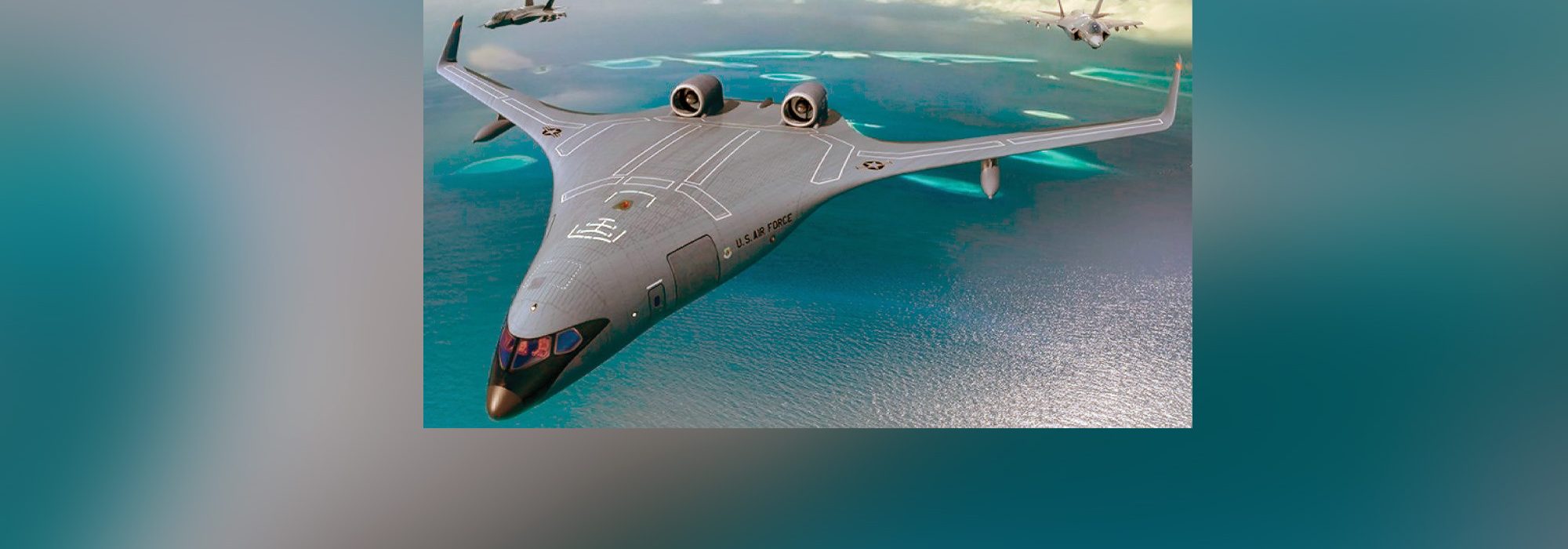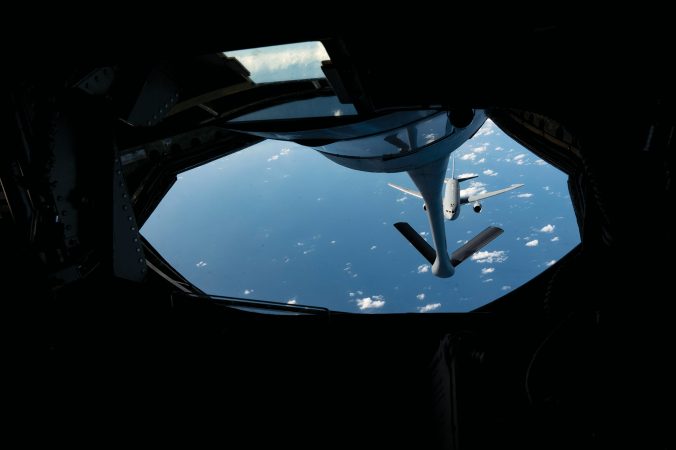How quickly can USAF develop a next-gen tanker?
NATIONAL HARBOR, Md.
T
he U.S. Air Force’s yearslong pursuit of a futuristic new tanker faces a new set of hurdles as the service rethinks its next-generation inventory and contemplates the potential for building a stealthy and possibly autonomous refueler as the crown jewel of the mobility enterprise.
Leaders want to begin buying a Next-Generation Aerial Refueling System, or “NGAS,” by the mid-2030s. But waiting that long means relying on today’s KC-135 fleet—airframes that average 60 years old—for at least another decade.
One solution: Launch NGAS sooner, eliminating the need for a one-for-one replacement of the KC-135, noted Assistant Secretary of the Air Force for Acquisition, Technology and Logistics Andrew P. Hunter, who told reporters Sept. 16 that USAF will need an interim solution.
“We think there’s going to be some period, between when the current contract [for KC-46 tankers] ends and when we’re truly into NGAS, where we’re going to need to buy something to cover down continued tanker production,” he said. “That construct is still the case, but it’s critically dependent on … how quickly we can get to NGAS.”
NGAS began almost two years ago with an assessment of the Air Force’s future options for aerial refueling. Ensuring those jets can survive in hostile airspace and that it can be more energy-efficient than previous fleets are key requirements.
Lockheed Martin is competing with a partnership of prime contractors Northrop Grumman and startup JetZero, and both have released design concepts for the coming competition. The Air Force formally solicited industry’s input in September, Secretary Frank Kendall said at AFA’s 2024 ASC Conference, seeking potential mission systems for NGAS as a “first step in establishing competitive vendor pools.”
A separate solicitation for airframes will follow, according to Hunter, once the service completes its requirements review.
Recently retired U.S. Transportation Command boss Gen. Jacqueline D. Van Ovost, whose command requested Air Force tankers for refueling missions around the world each day, promised that review would be completed soon. She predicted no surprises.
The analysis of alternatives (AOA) has explored how a tanker might fly into a contested environment where it could be shot down, how much fuel it would have to carry, and how it could become stealthier as needed, Van Ovost said.
The study is looking at how a tanker might refuel drones, and what extra requirements that might entail, as well as whether the tanker itself could be autonomous—a capability the Air Force does not have today. NGAS would also act as a communications relay node, part of the overall joint all-domain command and control systems used to share situational awareness on the ground, air and sea.
“I’m hoping that as this NGAS AOA comes out and we are able to expose all of those technologies, that no matter the platform, I can start getting those technologies as soon as possible,” Van Ovost said at the conference.
NGAS is both dependent on what the Air Force wants in its Next-Generation Air Dominance platform and could influence what those requirements could be. The sixth-generation combat aircraft is envisioned as operating in concert with uncrewed Collaborative Combat Aircraft, and Kendall decided to pause making a decision on the program last summer, pending yet another study. In comments at AFA’s conference, Kendall suggested the ability to have a stealthy refueler could potentially reduce range requirements for NGAD, which could in turn make that aircraft less costly.
Changing Times
The KC-135 was developed alongside the B-52 Stratofortress bomber in the 1950s, and it makes sense, Van Ovost said, that next-generation platforms should likewise be developed in concert with each other.
The Air Force had planned to seek industry proposals in fiscal 2025—ahead of NGAS’ arrival. But with the KC-135 aging and no solution near at hand, officials have begun to indicate they’d like to retire 15 KC-135s per year and replace them with an interim solution. This so-called “bridge tanker,” also sometimes called “KC-Y,” could be a new tanker or might mean buying additional KC-46s.
How many aircraft the Air Force needs will be a “critical driver” of what suppliers might offer, Hunter said. The smaller the potential buy, the less compelling the program will be. And the answer to that hangs on what that future, stealthy tanker requirement is and how soon it can be acquired.
“We need to understand the NGAS,” Hunter said, “to truly make additional progress on tanker recap.”
Abandoning a program comes with risks, too. In 2018, the Air Force scrapped an initiative to replace its E-8C Joint Surveillance Target Attack Radar jets with another airframe in favor of pursuing the Advanced Battle Management Network, a network of sensors and radars spread across other platforms. Critics accused the service of depriving service members of a critical airborne capability that had alerted ground troops to enemy forces that might be lurking nearby.
Discussion of future tankers comes as the Air Force continues downsizing two of its three aerial refueling fleets and bringing on the troubled KC-46 Pegasus, the U.S. military’s first 21st-century tanker program.
The Air Force expects to own about 350 KC-135s and nearly 120 KC-46s in fiscal 2025. Airmen will bid farewell to the final KC-10 Extender in September, as the fleet ends more than 40 years in service.
Congress has mandated that the Air Force own no fewer than 466 tanker aircraft, a number Hunter said the service believes is still feasible.
“Our current intention is not to propose an alteration in the statutory requirements for tanker aircraft,” he said. “That’s not to say that could never happen, but we don’t have anything to suggest to us that that current number is wrong.”
Airmen would continue to repair KC-135R jets until the service can replace them with something more capable, Hunter said.
Asked whether she has concerns about the KC-135 fleet’s ability to support the joint force, Van Ovost said she will continue to push the Air Force to train its crews and keep its jets ready for a high-end fight.
The Stratotankers in fiscal 2023 logged a 69 percent mission capable rate, a metric that shows what percentage of aircraft are ready to fly and support troops at any given moment.
In the meantime, Van Ovost said TRANSCOM is considering how other tanker assets across the joint force and overseas could offer more aerial refueling coverage and take some pressure off of the Air Force.
That could mean relying more heavily on Navy F/A-18s, which handle refueling around aircraft carriers at sea, or MC-130J Commando II aircraft that conduct low-level refueling of Air Force special operations assets. Van Ovost wonders if a future swarm of drone wingmen could turn to MC-130Js for fuel, or whether tankers owned by foreign partners could shoulder some of the mission—particularly in a place as vast as the Pacific.
“How do you put that package together?” she said. “That’s the concept of operations that we’re trying to work with the Air Force, mainly, on.”



